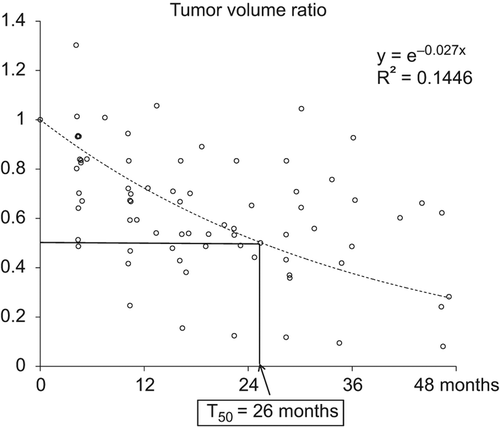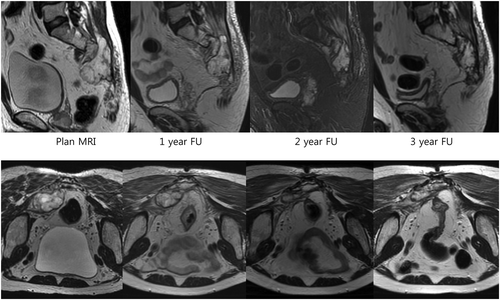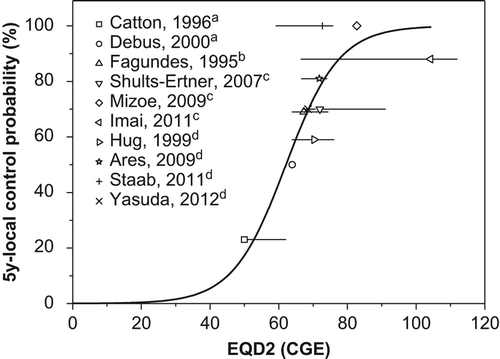Figures & data
Table I. Patient characteristics.
Figure 1. Relative volumes measured using follow-up MRI scans with reference to pre-radiotherapy values were plotted on a scattergram and a line of best fit was obtained. Time to a 50% or greater reduction in volume (T50) was 26 months.



